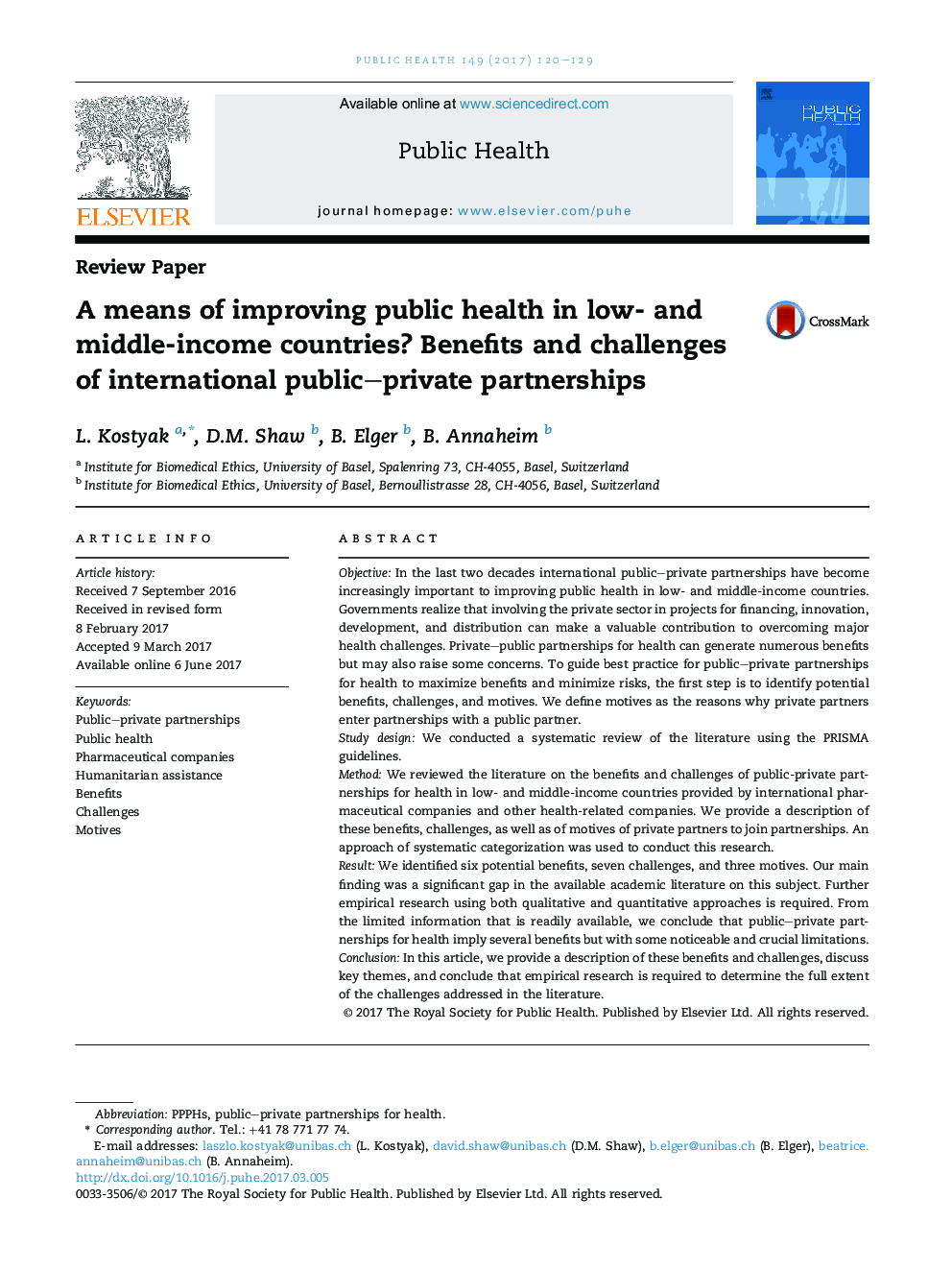| کد مقاله | کد نشریه | سال انتشار | مقاله انگلیسی | نسخه تمام متن |
|---|---|---|---|---|
| 5122862 | 1487194 | 2017 | 10 صفحه PDF | دانلود رایگان |
- Private-public partnerships for health (PPPHs) improve access to affordable healthcare interventions.
- Conflicts of interest among partners raise questions regarding accountability and ethical issues.
- There is a gap in empirical data, on the conduct of PPPHs.
- There is a need for universal guidelines that will govern PPPHs.
ObjectiveIn the last two decades international public-private partnerships have become increasingly important to improving public health in low- and middle-income countries. Governments realize that involving the private sector in projects for financing, innovation, development, and distribution can make a valuable contribution to overcoming major health challenges. Private-public partnerships for health can generate numerous benefits but may also raise some concerns. To guide best practice for public-private partnerships for health to maximize benefits and minimize risks, the first step is to identify potential benefits, challenges, and motives. We define motives as the reasons why private partners enter partnerships with a public partner.Study designWe conducted a systematic review of the literature using the PRISMA guidelines.MethodWe reviewed the literature on the benefits and challenges of public-private partnerships for health in low- and middle-income countries provided by international pharmaceutical companies and other health-related companies. We provide a description of these benefits, challenges, as well as of motives of private partners to join partnerships. An approach of systematic categorization was used to conduct this research.ResultWe identified six potential benefits, seven challenges, and three motives. Our main finding was a significant gap in the available academic literature on this subject. Further empirical research using both qualitative and quantitative approaches is required. From the limited information that is readily available, we conclude that public-private partnerships for health imply several benefits but with some noticeable and crucial limitations.ConclusionIn this article, we provide a description of these benefits and challenges, discuss key themes, and conclude that empirical research is required to determine the full extent of the challenges addressed in the literature.
Journal: Public Health - Volume 149, August 2017, Pages 120-129
